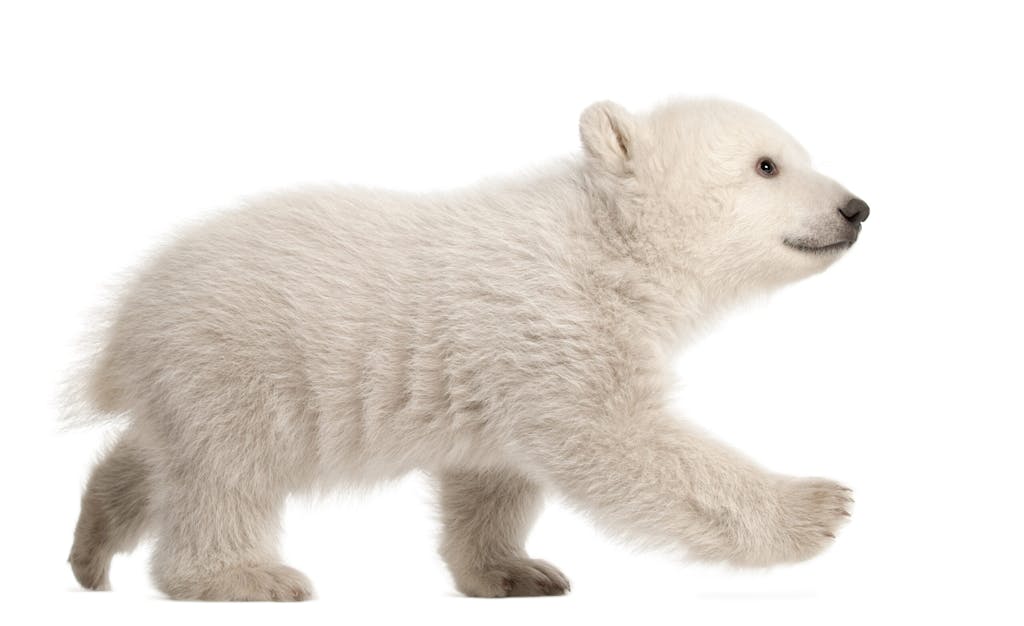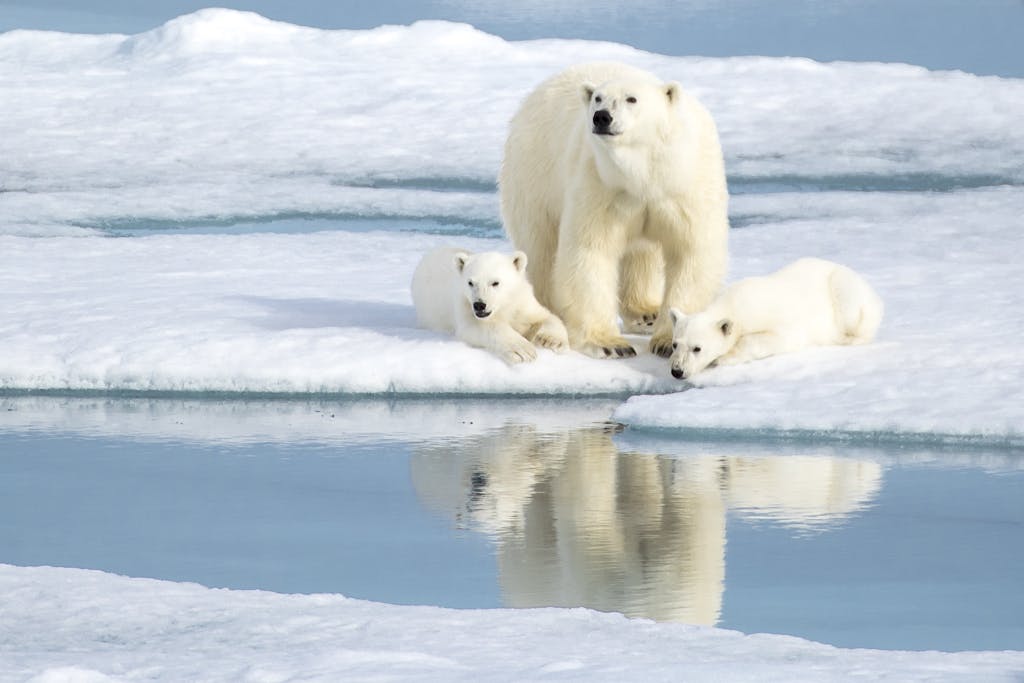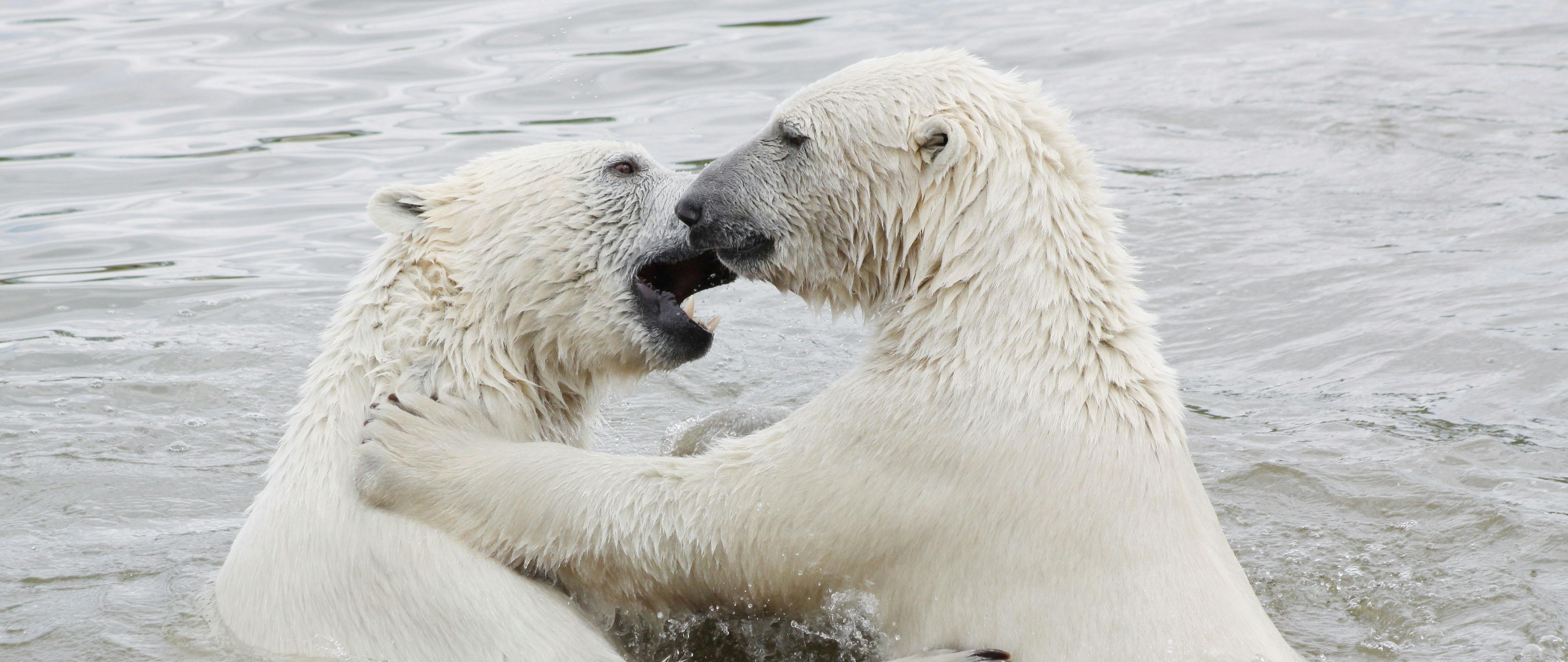Arctic Polar Bears: A Love Story With an Uncertain Ending
Somehow, the words “playful” and “predator” don’t seem to go together, yet when you watch this remarkable video of two Arctic polar bears in the Beaufort Sea, engaging in a gentle prelude to romance, you can’t help but see another side.
What we know about polar bears, found primarily in the Arctic, seems to defy the notion of tenderness. The largest males may tip the scales at 1,600 pounds and may be as tall as 10 feet; females are generally not more than 650 pounds and about half the height of males, but they are no shrinking violets — especially when it comes to protecting their cubs.
Polar bears are an apex predator, which means they are kings (and queens) of the world, with no known enemies. They are not afraid of anything, including humans. Fortunately, we are not their favorite meal.

Instead, for an appetizer, they prefer Arctic wildlife such as ringed seals, which weigh 200 pounds and are about 5 feet long. Their favorite main course: bearded seals, the brushy-mustached pinniped that can be as long as 12 feet and weigh as much as 1,000 pounds. Arctic polar bears also can eat as much as a half ton of blubber at one sitting.
Female polar bears play a waiting game
That’s especially important for the female. Once pregnant with one to four cubs (two is the usual number), she digs a snow cave and retires to await the birth. Gestation lasts 6 ½ to nearly nine months, and the soon-to-be mom doesn’t eat while she’s waiting, having stored up enough fat to sustain her.
Here’s where nature confounds again: At birth, usually in December, the cubs weigh between 1 and 1.3 pounds. How can something that tiny hope to survive?

Nature has that covered. The female’s milk is about one-third fat, and cubs grow quickly, reaching as much as 25 pounds in three months. (By contrast, human babies that age weigh 13 to 14 pounds.) The young ones continue to nurse and grow, staying close to mom for as long as three years before they go off on their own.
Then she’s ready for romance again, which means a new mate because polar bears are not monogamous.
Not endangered but threatened
Arctic polar bears — whose genetics protect them from developing heart disease, despite the huge amounts of fat they consume — live to 25 or 30 in the wild, but they are considered threatened, due to global warming. Experts estimate 22,000 to 30,000 Ursus maritimus, or sea bear, remain.
They live on sea ice, which is melting more rapidly, thus reducing the amount of time they can hunt and impeding their quest to store fat for the long winter. Experts say they may be extinct by the end of this century.

“Reframing the threat to polar bears would be an opportunity to rethink and rebuild our relationship with the planet and each other,” James Raffan, a geographer and the author of Ice Walker: A Polar Bear’s Journey Through the Fragile Arctic, wrote in an opinion piece for The Globe and Mail. After all, he notes, “We are the bear, swimming around in a warming soup of our own making.”
This video was created by Silversea expedition filmmaker Kris Markov with narration by Jamie Watts, a Silversea expedition marine biologist.
Want the chance to see more Arctic wildlife? Explore Silversea’s Arctic & Greenland Cruises.
